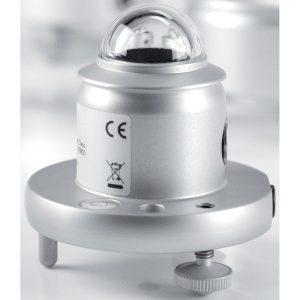Solar radiation is a fundamental aspect of Earth’s energy balance, influencing various natural processes and human activities.
Pyranometers serve as indispensable tools in various fields, including renewable energy and meteorology. They provide valuable data for assessing solar energy potential, optimizing solar power systems, and predicting weather conditions.
What is a Pyranometer?
A pyranometer is a specialized instrument designed to measure the total solar radiation received on a given surface over a specific time period. It serves as a key component in solar energy systems, weather stations, and environmental monitoring networks.
At its core, a pyranometer quantifies the amount of solar energy reaching a particular area. This measurement is essential for understanding the availability of solar resources and evaluating the performance of solar energy systems.
Measurement of total solar radiation
Pyranometers are engineered to capture both direct and diffuse solar radiation, providing a comprehensive assessment of the solar energy incident on a surface. This holistic measurement accounts for variations in sunlight intensity and cloud cover.

Working Principle of Pyranometers
Understanding the underlying mechanisms of pyranometers elucidates their functionality and accuracy in solar radiation measurement.
Absorption of solar radiation
When sunlight strikes the pyranometer’s sensor surface, it is absorbed, causing a temperature rise or generating electron-hole pairs in the semiconductor material. This conversion process forms the basis for measuring solar irradiance.
Generation of electrical signal
The absorbed solar energy induces a measurable change in the sensor’s electrical properties. In thermopile pyranometers, this change manifests as a voltage across the thermocouple junctions, while in photovoltaic pyranometers, it corresponds to a current output from the photovoltaic cells.
Calibration and accuracy
To ensure reliable measurements, pyranometers undergo rigorous calibration procedures to correlate their electrical output with known irradiance levels. Regular calibration checks are essential for maintaining accuracy, especially in long-term monitoring applications.
Applications of Pyranometers
Pyranometers find widespread use across various sectors due to their versatility and reliability in solar radiation measurement.
Solar energy assessment
One of the primary applications of pyranometers is assessing the solar resource potential at a given location. By collecting long-term solar irradiance data, stakeholders can determine the feasibility of solar power projects and optimize their performance.
Monitoring weather conditions
Pyranometers are important in in meteorology by providing essential data for weather forecasting and climate research. Solar radiation measurements contribute to understanding atmospheric dynamics, cloud formation, and regional climate patterns.
Agriculture and environmental studies
In agriculture, pyranometers aid in crop management and irrigation scheduling by quantifying solar radiation inputs for photosynthesis. Additionally, environmental scientists use pyranometer data to study ecosystems, evaluate environmental impacts, and assess climate change effects.
Factors Affecting Pyranometer Readings
While solar radiation sensors offer valuable insights into solar radiation, several factors can influence their accuracy and reliability.
Angle of incidence
The angle at which sunlight strikes the pyranometer’s sensor affects the measured irradiance. Variations in solar zenith angle and surface orientation can lead to discrepancies in readings, especially in installations with non-horizontal surfaces.
Atmospheric conditions
Changes in atmospheric properties, such as cloud cover, aerosols, and humidity, can attenuate solar radiation and affect pyranometer measurements. Calibration equations may need adjustments to account for atmospheric attenuation under different weather conditions.
Calibration drift
Over time, pyranometer sensors may experience calibration drift due to aging, environmental exposure, or mechanical stress. Regular recalibration and maintenance are necessary to mitigate drift-induced errors and ensure data accuracy
CONTACT US







